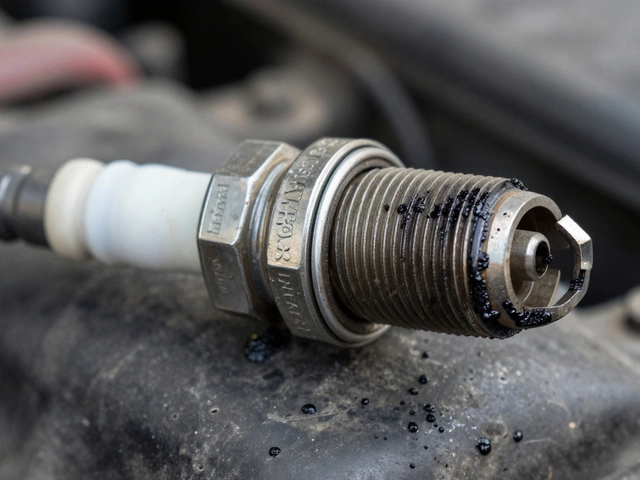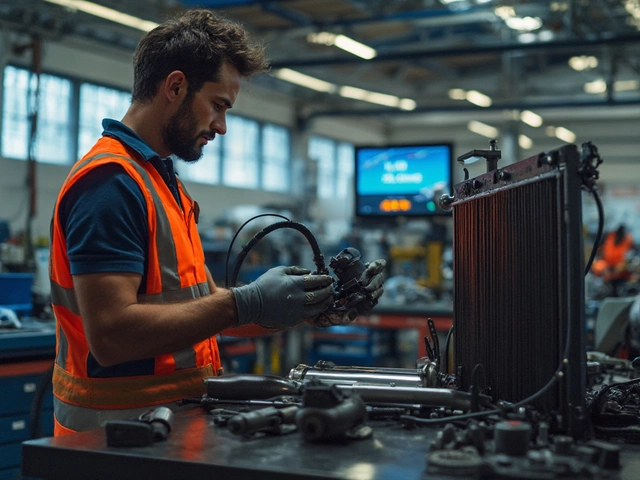Air filters might not be the most exciting topic, but they're absolute lifesavers when it comes to keeping the air in your home clean. Ever wondered why some homes just feel fresher to breathe in? It's probably down to the air filters doing their job. But not all filters are created equal!
Let's break it down. You’ve got three main types to consider: HEPA filters, activated carbon filters, and electrostatic filters. Each has its own toolkit for tackling different air quality issues. HEPA filters are like the superheroes of the filtering world, blocking out those tiny little particles you can’t even see but definitely don’t want in your lungs. And if funky smells are your nemesis, those activated carbon filters come to the rescue, soaking up odours like a sponge.
On a budget? Electrostatic filters can be your best mates — wash them, reuse them, and save a few quid. So, whether it’s about capturing micro-particles, eliminating odors, or just saving some cash, knowing your filters is the way to go. Stick around as we dive into each filter type and help you decide which one's your home's best friend.
HEPA Filters
When you hear the term HEPA filter, think of it as the gold standard for clean air. These guys are the top dogs in the air filtering world, trapping almost everything nasty you don't want to be breathing in. HEPA stands for High-Efficiency Particulate Air, and these filters are designed to capture at least 99.97% of particles as small as 0.3 microns. That's some serious cleaning!
What makes HEPA filters special? Well, they're made of tightly woven fibers that can snatch dust, pollen, mold, and other allergens right out of the air. So if you're battling allergies or just want to make sure you’re taking care of what you breathe, they're worth considering.
How Do HEPA Filters Work?
Let's break down the science a bit. There are three ways these filters trap unwanted particles: interception, impact, and diffusion. The fibers in the filter are arranged randomly, so as air passes through, small particles are snagged by different mechanisms:
- Interception: Particles flowing through the air get caught directly by attaching to a fiber.
- Impact: Larger particles can’t dodge the fibers and crash into them, which sticks them in place.
- Diffusion: Super tiny particles collide with gas molecules, altering their path, and enhancing the likelihood they'll be caught by the fibers.
Where Are HEPA Filters Used?
These filters aren't just for the home; they're used anywhere clean air is needed. Hospitals, labs, and even airplanes rely on HEPA filters to keep things fresh and safe. At home, you'll often find them in vacuum cleaners, air purifiers, and HVAC systems.
Pros and Cons
So, should you slap a HEPA filter on everything? Not always. There's a added cost to having an ultra-effective air filter, and they need to be replaced regularly to keep them working properly. Plus, they're not great at removing odors or chemical fumes—that's where activated carbon filters come in.
On the upside, if you choose HEPA, you're investing in a healthier home environment, reducing the risk of allergic reactions and maintaining overall air quality. That’s a trade-off many folks are happy with!
Activated Carbon Filters
Ever walked into a room and smelled something funky? That's where activated carbon filters step in like a trusty sidekick. These filters are pros at getting rid of odors, smoke, and even some chemicals you don’t want lingering in your airspace.
So, how do they work their magic? It’s pretty cool. These filters use activated carbon, which is carbon that’s been treated to have loads of tiny, tiny pores. These pores act like a sponge, trapping particles on their surface. And while they're at it, they also soak up volatile organic compounds (VOCs) that can float around from things like paint or cleaning supplies.
Why Choose Activated Carbon Filters?
If you’ve got a pet or you're a home chef who loves spicy curries, these filters are your friend. They’re awesome at dealing with pet odors and leftover cooking smells that can hang around longer than welcome. Plus, they're non-toxic and eco-friendly, which makes them perfect for homes that are looking to keep things green.
How to Use Them
Activated carbon filters are super versatile. You can find them in everything from air purifiers to HVAC systems and even refrigerators. When choosing one, look out for the thickness and amount of carbon – more carbon generally means more filtering power. And don’t forget, they’re not forever – replace them when they get clogged to keep them working efficiently.
| Uses | Effectiveness |
|---|---|
| Odors Removal | High |
| Chemical Filtration | Moderate |
| Particulate Removal | Low |
Overall, if you're looking to improve your indoor air quality, activated carbon filters are a solid option to consider. They keep the air fresh and breathable by tackling nasty odors and some chemicals effectively.

Electrostatic Filters
Alright, let’s chat about electrostatic filters. These guys are all about using science to keep your air fresh. They work by pulling particles out of the air using static electricity. Yeah, it sounds fancy, but it’s actually pretty straightforward. When air passes through the filter, the static charge attracts and traps dust, pollen, and other small particles.
Electrostatic filters are great because they're often washable, which means you can rinse and reuse them. This makes them super eco-friendly and wallet-friendly too. Instead of constantly buying new filters, you just give them a good clean and pop them back in. How often should you clean them? Every month or so should do the trick.
Performance Considerations
Now, while they’re nifty with small particles, don't count on them for everything. Unlike the mighty HEPA filters, electrostatic filters might not catch those teeny-tiny airborne particles. They’re a solid option for general stuff like dust and pollen, but if you’ve got serious allergies, you might want to look elsewhere.
Benefits at a Glance
- Cost-effective: One-time purchase with periodic cleaning.
- Eco-friendly: Reusable design reduces waste.
- Low maintenance: Easy to clean and maintain.
- Efficient at trapping large airborne particles like dust and pet dander.
If you’re trying to decide on an air filter, think about what you need most — is it low maintenance, cost savings, or maximum particle trapping? A bit of research and comparison can go a long way in making that decision. Take a look at the different options and ensure you’re picking what's right for your specific needs.
Choosing the Right Filter
So, you're standing in the aisle, staring at a wall of air filters. How do you pick the right one? It's not just about grabbing the first thing you see. No, it's all about knowing what you need for your space and needs. Let’s figure this out together!
Consider Your Needs
Firstly, think about what you really need from an air filter. If you’ve got allergies or asthma, a HEPA filter is likely your best bet. It's practically made for catching those nasty allergens.
Odor and Chemical Concerns
Have you noticed a lingering smell of last night's curry or the paint fumes from your latest DIY? That's where an activated carbon filter steps in. They're great for soaking up odors and chemicals.
Budget-Friendly Options
If keeping costs down is key, then electrostatic filters could be up your street. Not only are they cost-effective because they’re washable and reusable, but they cut down waste too. A win-win!
Filter Sizes and Ratings
Don't forget to check the size of your current filter and the recommended rating for your unit. A higher MERV rating means it traps smaller particles, but it could restrict airflow if it's too high for your system. It's all about balance!
| Filter Type | Best For | Drawback |
|---|---|---|
| HEPA | Allergens, Dust | Costly |
| Activated Carbon | Odors, Chemicals | Needs regular replacement |
| Electrostatic | Cost-Saving, Reusable | May not catch very fine particles |
By knowing your needs and understanding the strengths of each filter, you can make an informed choice. Keep these simple pointers in mind next time you’re shopping, and you’ll breathe easier—literally!






